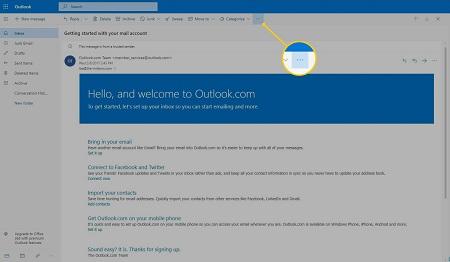How to Secure Emails on outlook.com and Outlook App

Securing data and application is a good idea, but if you are willing to provide extra protection to your data that you receive on your mail, you can do so by keeping your Email secure. If you are using Outlook service, whether it is web-based or application, then you can encrypt your MS Outlook emails.
One has to keep the end-user in mind, along with the clients to whom he is interacting with.
Protecting Email on outlook.com or MS Outlook application seems something difficult, but it’s so easy if you follow these under mentioned instructions:
Encryption in MS Outlook
Microsoft Outlook provides two different types of encryption methods.
S/MIME Encryption System: It performs smoothly when the particular business runs on the Outlook Enterprising license of E3 or MS Office 365.
MS Office 365 Message Security: It works and used mostly mailing services, excluding MS Outlook.
In case you are using Web-based Outlook services, then you will get the encryption services that housed in. The complete encryption system of Outlook is slightly different from the traditional way of protecting other applications. You can set up protection for your PST files.
Encrypting Emails in Microsoft Outlook
In case you are using the S/MIME protection system of MS Outlook, then ensure that the sender and the receiver both have S/MIME supported email application. There, you will be allowed to encrypt a particular mail or whole of your mailing services. Your selection depends on the policy enforcement of your IT department.
You should have an S/MIME certification downloaded on your device for this task. After completing and checking these things, ensure that you have well connected to the right person. Once you have installed the authentication certificate, and then go to the digital certificate pull drop menu ad check that you are all set.
Encrypting Individual Mailing
- In the beginning, navigate to the New Email Composer and then hit the tab “Options.”
- After that, launch the More options tab by hitting the arrow icon located at the lowermost section. This action will launch the section of Properties. After that, press the Security Settings option there.
- You have to mark the box related to the option related to Encryption.
- After that, go to the Security section and hit the pull drop box located under the option security settings.
- Then, tap on the certification option related to S/MIME.
- Finally, select the security icon if required.
- Once you transferred the particular mail, it will be automatically protected by the standard way.
Note: In case, you don’t have the certification of S/MIME, then you will need to add a particular option that you wish. In case you are unable to do the same, Outlook will permit you to send the protected mail.
Note: In case you find any difficulty in any step browse www.outlook.com.
Encrypting All Mails
- Launch the Microsoft Outlook on your device and hit the menu option related to File.
- After that, hit on the tab “Options.” Then, go to the section “Trust Center.”
- Next, tap on “Trust Center Settings” there.
- Hit the Email Security option.
- Mark the box related to the option for encrypting message contents and other attachments.
- Hit the Settings tab by locating the Encrypted mail.
- Press the Certificates and Algorithms.
- Choose the option S/MIME Certificate.
- Finally, press the OK tab.
- Once you have activated the encryption system, all your Emails will automatically be encrypted. You have to check and ensure that the receiver has the S/MIME supported client for reading the mail that you have sent.
Encrypting Emails on the Web
This encryption method works when you think that your mail recipient is active or not for this task. It is applicable for both MS Office 365 Personal and MS Office 365 Home edition. You should be very aware of the functioning of the web-based service of the Outlook encryption process. If it fails to work, the receiver won’t be able to fetch contents or read any mailing services.
To perform or set up the encryption service to your web-based Outlook, follow these guidelines:
- First and foremost, hit the Outlook account log in tab and enter all the necessary information.
- After that, hit the new message icon there.
- Go towards the right side section of Attach and search for the link of Encryption. Hit on it to proceed.
- You will be provided two different options:
- Encrypt
- In the system, the Email will remain encrypted without leaving MS Office 365 edition.
- All the recipients holding MS Office 365 and Outlook.com will be allowed to install attachments without the Encrypting the data.
- You can encrypt your data and mail through MS Outlook mobile application, outlook.com, and mail application on Windows 10.
Note: If the recipient uses another mailing client, then you have to set up a temporary passcode to install the attachments from the Message Encryption portal of Office 365.
- Encrypt and Prevent Forwarding
- Your Email Message remains protected in the Office 365 Edition.
- The whole process can’t be forwarded or copied to any location.
- Once you have downloaded the data on any of the Office Suite, the Encryption will be automatically applied.
- You can download any type of File such as PDF or JPG without the Encryption procedure.
Devin Smith is a creative person who has been writing blogs and articles about cyber security and utility software programes. He writes about the latest updates regarding norton.com/setup and how it can improve the work experience of users. His articles have been published in many popular e-magazines, blogs and websites.
Source:-https://greennorton.com/how-to-secure-emails-on-outlook-com-and-outlook-app/
Post Your Ad Here
Comments